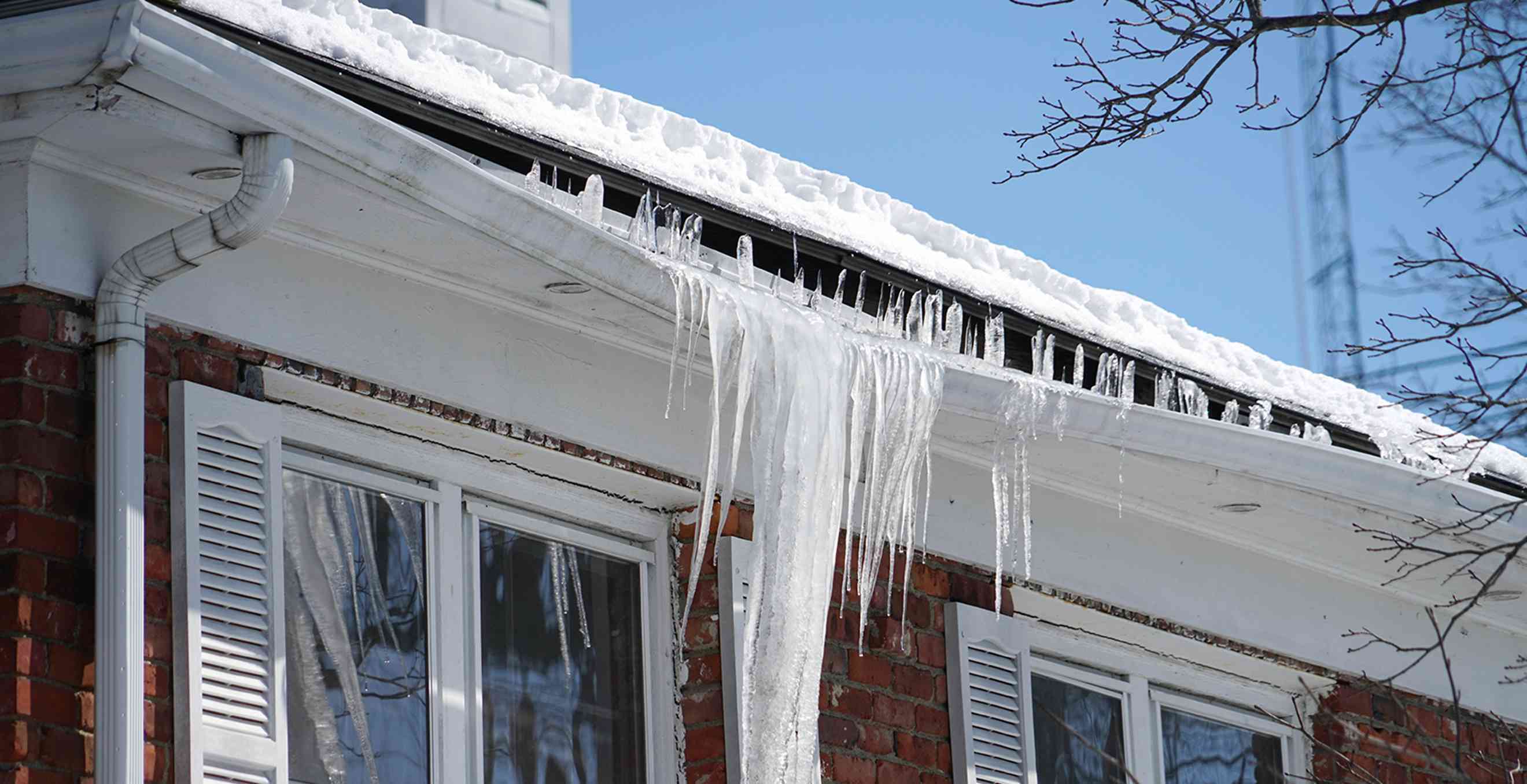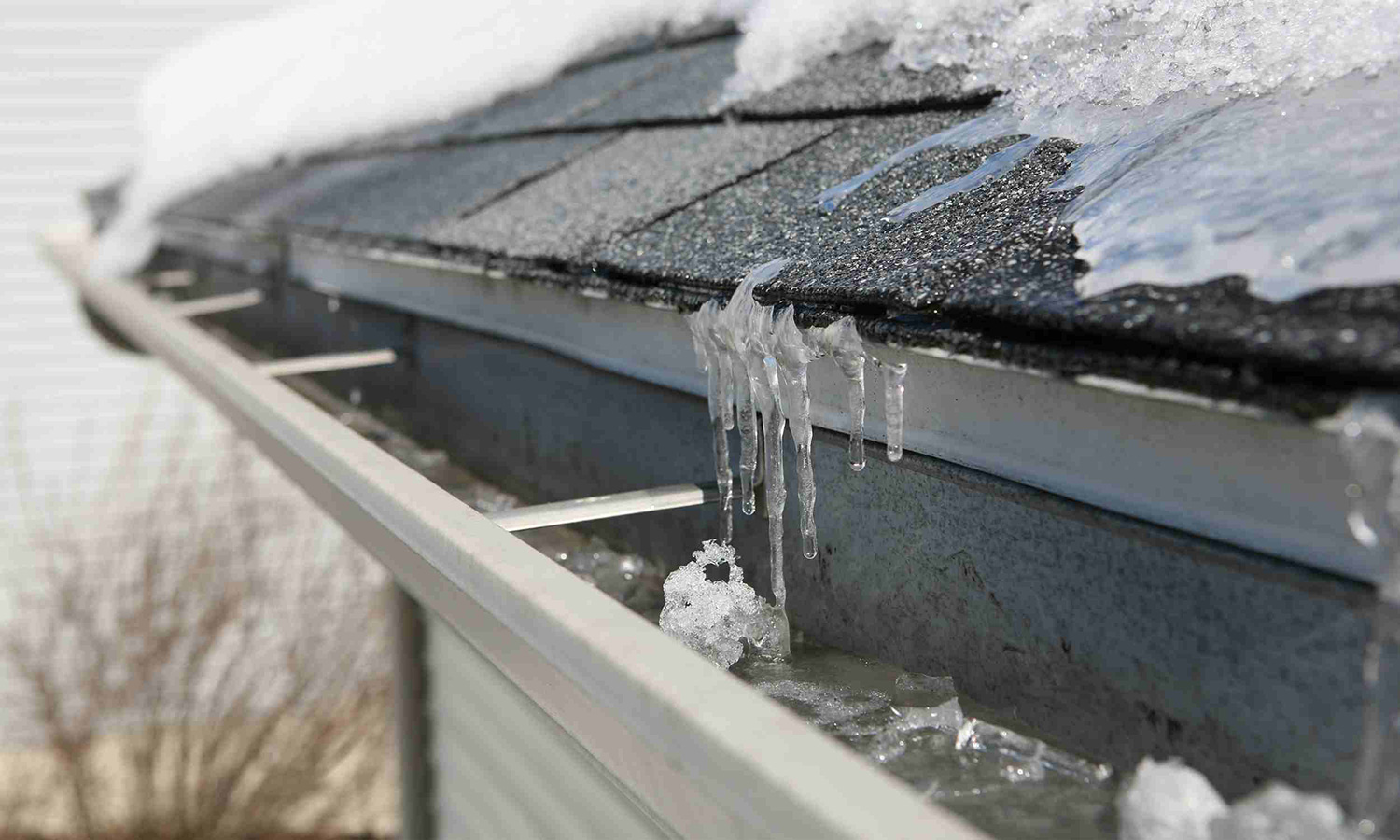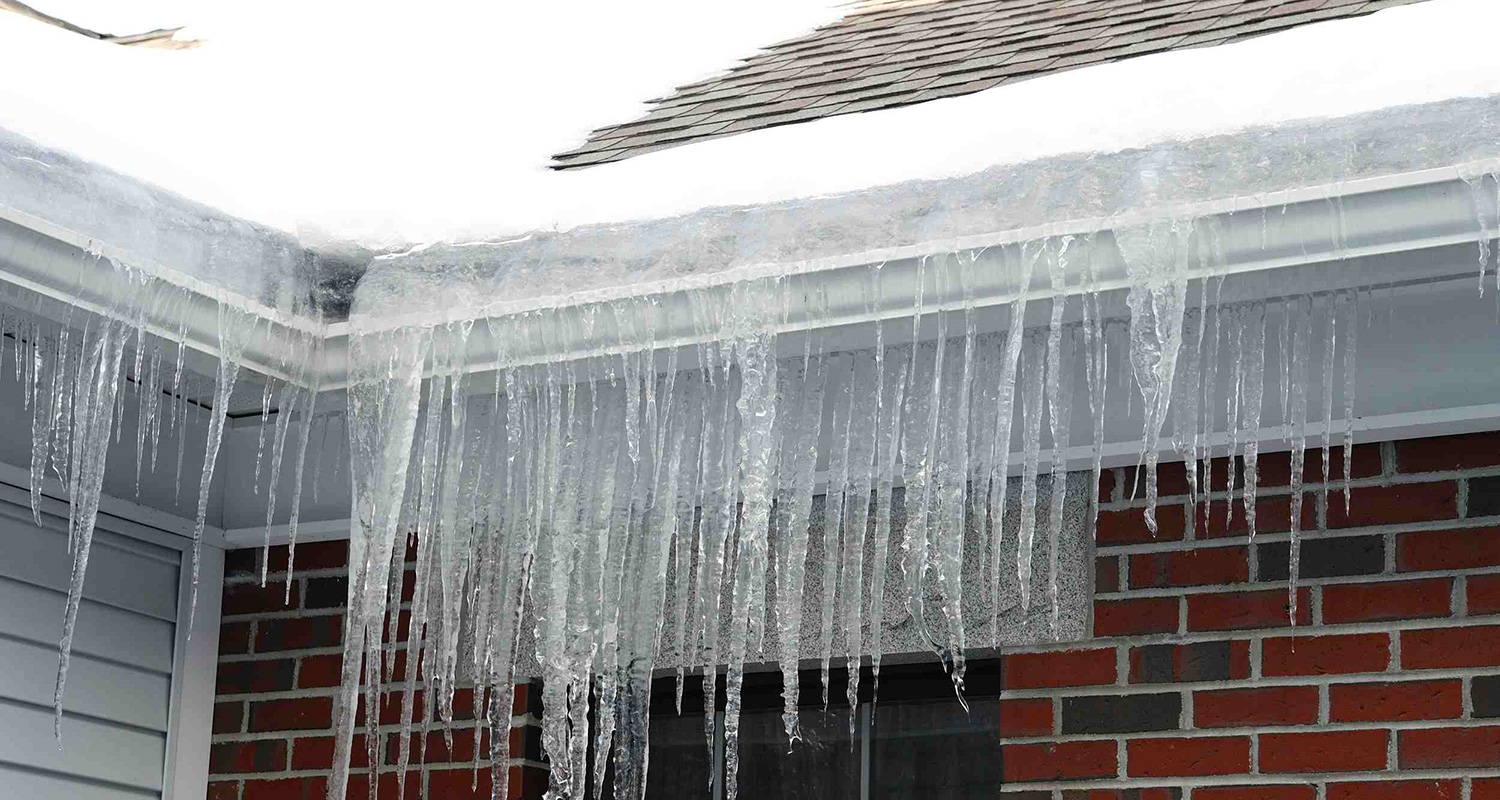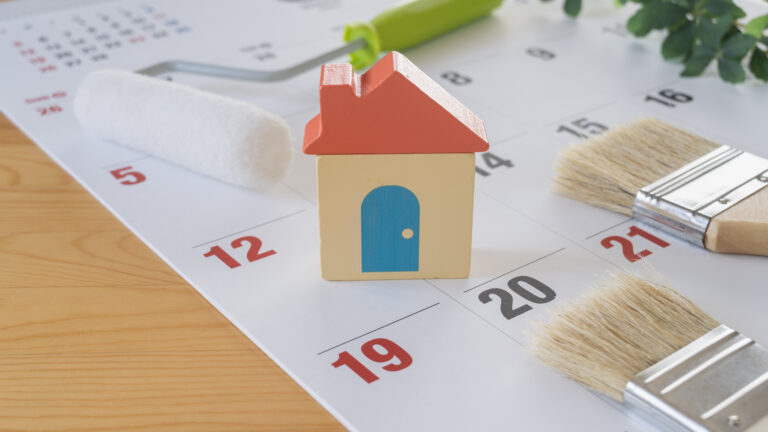Roof Ice Dam Removal
Table of Contents
- Roof Ice Dam Removal
- The Best Ways To Get Rid of Ice Dams
- How To Remove Ice Dams on Your Roof
- How Not To Remove Ice Dams
- Prevent Ice Dams for Good
- Need Help With Your Ice Dams?
Roof Ice Dam Removal
In the winter, ice tends to collect on some roofs near the edges because of snow from a snowstorm that melts and refreezes during a drop in temperature. While you can, and should, address the underlying cause of the ice dam, you should also seek to remove the current dam from the roof. Otherwise, it may wear on the roof and increase your likelihood of developing a leak.

The longer the ice dam remains, the higher the risk you take. However, you also must be careful about how you remove the ice dam, as certain methods may damage the roof. We’ll guide you through the ice dam removal process, revealing which methods are safe for your roofer to try, and which methods should not be attempted at all.
The Best Ways To Get Rid of Ice Dams
You can temporarily get rid of ice dams by melting them away. There are four safe ways your roofing professional can remove an ice dam from your roof:
- Use hot water: Running hot water over the ice dam, gently, will melt it and allow the water to drain out through the gutters.
- Install heat cable: You can have heat cables installed on the roof in the summertime which will then be there come cold weather to melt the ice dam for you. Your roofer may recommend that you use them temporarily or install them permanently to solve your ice dam problems moving forward. For example, they may be installed on roof planes that face north and have a higher roof plane draining onto them. As these roof planes get very little sun in the winter, the excess water becomes an ice dam more easily. Roofers may also use heat cables to prevent ice dams from forming and drainpipes from freezing on commercial roofs.
- Remove snow: If warmer weather is on its way, and the ice dam is likely to melt, your roofer might choose to have the rest of the snow on your roof removed. Otherwise, the snow may melt under the sun and become another ice dam when it refreezes at the colder roof’s eave. The National Roofing Contractors Association (NRCA) recommends that some snow be left on the roof in order to prevent damage to the shingles. That way, the contractor’s shovel doesn’t come into direct contact with the roof, so it won’t scrape it. Remember that only a professional can safely remove snow from the roof with a shovel, and they must be very careful.
While it’s always best to consult with a professional roofer about how best to remove your ice dam, there are some less-experienced roofers or general contractors who may attempt to remove ice in an unsafe way. It is important for you to be educated about how a professional should remove ice safely, so that you can protect your investment in your roof. Here’s a guide explaining how a professional can safely remove ice dams with hot water.
How To Remove Ice Dams on Your Roof
Tools you’ll need include:
- Ladder.
- Garden hose.
- Roofing team.
Steps you’ll need to take are as follows:
- Step One: Your roofers should place their ladder safely next to the portion of your roof with the ice dam. They should follow ladder safety protocol to keep themselves safe. They should not place their ladder on ice or snow.
- Step Two: One roofer will climb the ladder and have another member of the team hand him or her the hose. One roofer will then turn on the hose.
- Step Three: Next, your roofers will direct the hot water onto the roof. It may take some time depending on the size of the ice dam, but it will eventually melt. As they work, your roofers will be careful not to aim the pressurized water directly against the shingles. Otherwise the shingles may lift, and the water could damage them. This is one reason why you should not use a pressure washer on a roof. Once the ice has melted, your roofer should ensure that all chunks of ice have cleared the gutters, or they may create a gutter clog.
How Not To Remove Ice Dams
There are many incorrect ways to remove ice from your roof that will damage your asphalt shingles and compromise your roof’s water-shedding ability. Protect your roof and home, and keep your limited warranty valid by asking your roofer to avoid these risky ice-removal methods:
- Manual removal: It is NOT a good idea to take a pick, shovel or another tool to the ice and chip it off. This might remove the ice, but might end up damaging the shingles too. Plus, the next ice dam in this spot is likely to take advantage of the cracks or gaps your roofers have created in the roof. As the snow melts, the water could settle into these cracks and freeze and expand. This kind of damage may result in a leak. The only time roofers should manually remove ice is when they will also replace the roof beneath it.
- Chemicals: Roofers should avoid using any chemicals on your roof. Many ice-melt products combine salt and other chemicals that make the salt a more effective de-icing treatment. More targeted ice dam ice-melt tablets are available, but are not recommended for asphalt roofs. Unfortunately, some of these chemicals can have a negative effect on asphalt shingles, especially if the chemicals are left on the roof for long periods, and their use may void the manufacturer’s limited warranty.
Prevent Ice Dams for Good
These ice dam removal methods are all temporary. They can help your roof avoid damage in the short term, but they won’t stop another ice dam from forming. In order to resolve your ice dam problem for the long run, your roofers need to address the underlying issue that is causing the ice dam to form. While many homeowners believe that the real problem is poorly maintained gutters, this is rarely the case. Most commonly, the underlying issue is inadequate attic insulation.
Work with your roofing professional to discover what kind of insulation you have and whether it needs to be replaced with a more effective type of attic insulation. Better insulation will prevent the home’s heat from reaching your shingles. Therefore, the snow on the shingles will likely not melt or be able to refreeze as an ice dam.
Other roof issues may be contributing to the formation of ice dams on your roof. While fixing these problems will not typically resolve the ice dam by themselves, they may help reduce the severity. They will also help keep your roof in better condition in general. These contributing factors may include:
- Ventilation: Plumbing vents commonly end on the top of the roof. However, ventilation for other home systems should not end on the roof. If they do, they run the risk of melting the snow around them, leading to ice dam formation when the water refreezes. Consider running vents out through the wall of the home instead.
- Connection points: Roof design may contribute to ice dam formation. For example, if an upper roof plane drains onto a lower, unheated, roof plane, this water may create ice dams. A roofing professional can tell you if your roof design is the problem and what can be done to correct it.
- Gutter maintenance: Although they are very rarely the primary cause of an ice dam, clogged and slowly draining gutters may develop ice dams. It’s essential to clean your gutters in the fall to avoid this problem.
There is also a way to protect your roof and home from damage from any potential ice dams that might develop. Installing ice and water protector is often required by building codes because it offers your roof extra protection.
Need Help With Your Ice Dams?
Ice dams should always be removed by professionals who understand winter roof safety and how to protect the shingles from further damage. Plus, once they have removed your current ice dam, they will need to address the underlying cause before another ice dam occurs. If you need to reach out to a professional, consider IKO’s Contractor Locator, which may suggest roofers right in your area.





